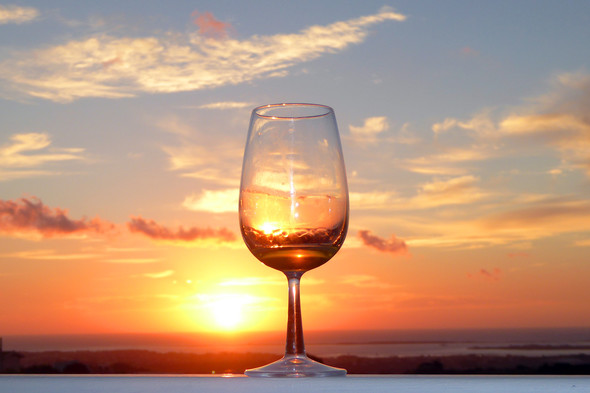What comes to mind when you hear ‘Sicily’? Cosa Nostra, corruption, horses’ heads in beds, mass shootings in Palermo, huge lakes of EU-funded cheap wine, as well as the nicer aspects, Limoncello, ice cream, Etna (depending on how you see it – she’s quite fiery at the moment), sun, sea and sand. However, Sicily has much more to offer.
When I’m too old and feeble to do little more than eat and drink, Sicily would not be a bad place to be. Famed throughout antiquity for its agricultural produce, including, of course wine, Sicily is a place where you can’t help but eat and drink well, and my waistline after a week there certainly attested to that. A series of ‘light’ lunches and dinners consisting of cous cous, swordfish, arancini, pasta, sardines, caponata, lasagne, baked aubergine, fried baby squid, panelle, cannoli, pistachios, olives, cheese and, oh yes, a pistachio granita in Catania, wreaked havoc.
Sicily has been overrun by a myriad of peoples, including the Phoenicians, Greeks, Romans, Arabs, Normans and Bourbons, all of whom have left their mark on the island in many ways, making it a fascinating place to visit. So, October saw a group of winelovers descending on Sicily to learn about the wines, food and culture, from Marsala, Etna and en route between the two.
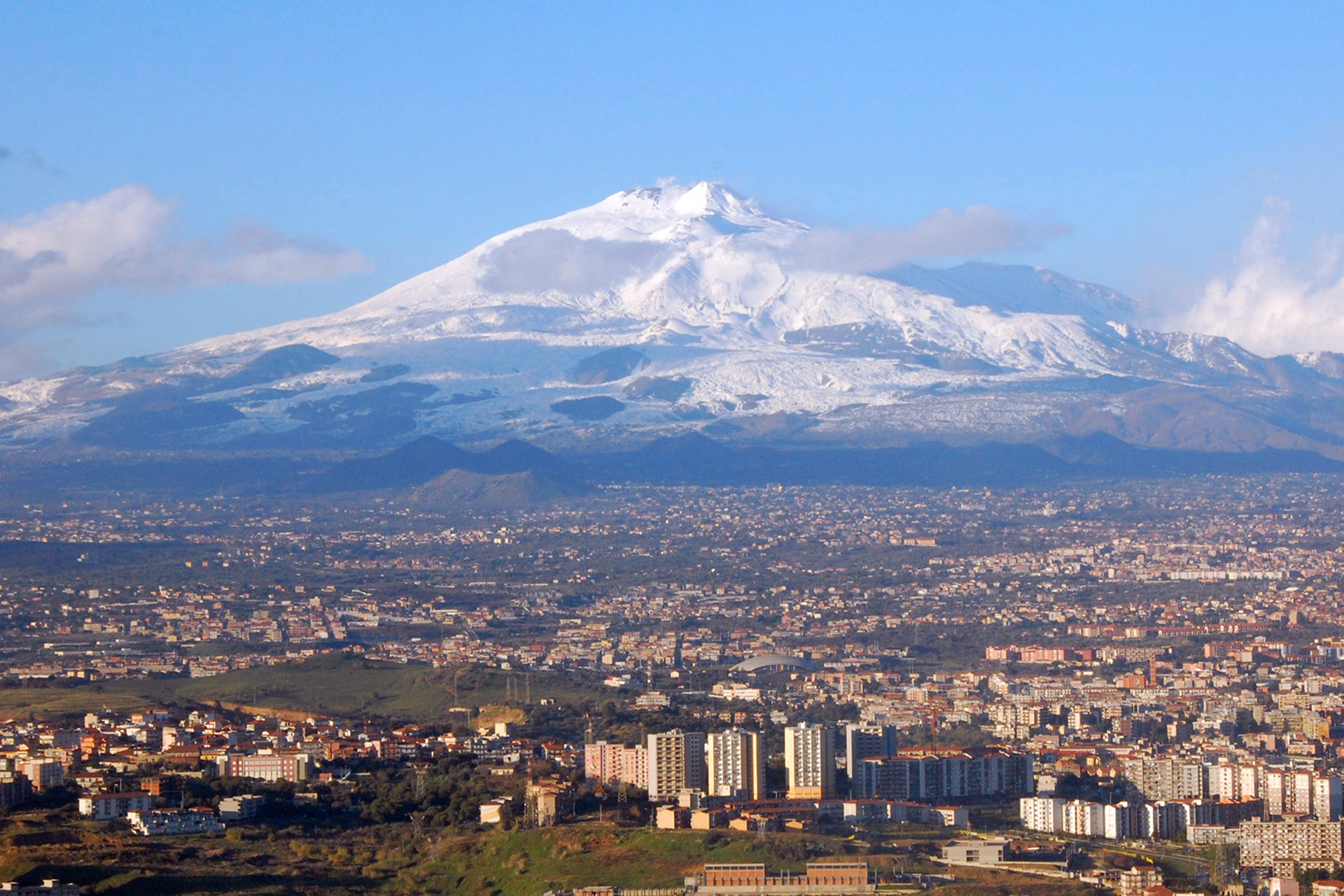
My odyssey started in Catania, from where I set off with Brandon and Lidia across the island towards Marsala where we would spend a couple of days visiting wineries. Brandon had warned me that we would have to take a ‘slight’ detour due to the collapse of a motorway bridge. We took the shorter, ‘unofficial’ detour, which took us up into the hills and villages of the mountainous interior and involved a tortuous, rather sheer descent down a hastily constructed ‘road’ and over a somewhat flimsy looking bridge back to the motorway – I had been warned!
Shortly after we arrived at Baglio Donna Franca, our hotel, but also a working winery with a great restaurant, the skies opened; this didn’t bode well for our morning trip to Mozia, a small island just beyond the salt pans of Marsala, which we’d been warned would be cancelled in case of (torrential) rain (and strong winds). Here Tasca d’Almerita produces Grillo Mozia
Thus, Donnafugata was our only winery port of call the next day, where we tried a wide range of their wines, including some tank samples, 1999 Mille e una note (principally Nero d’Avola and a small amount of other unstated varieties) and the luscious Ben Ryè, Passito di Pantelleria 2013 and 1990. After a light lunch, and light generally has the opposite meaning with regard to lunch in Sicily, we were able to sample wines from a number of other Sicilian producers, including local varieties such as Perricone, Carricante, Grillo, Catarratto, Inzolia (also known as Ansonica), Grecanico, Frappato, Nerello Mascelese, Zibibbo (in fact, Muscat of Alexandria) and more.
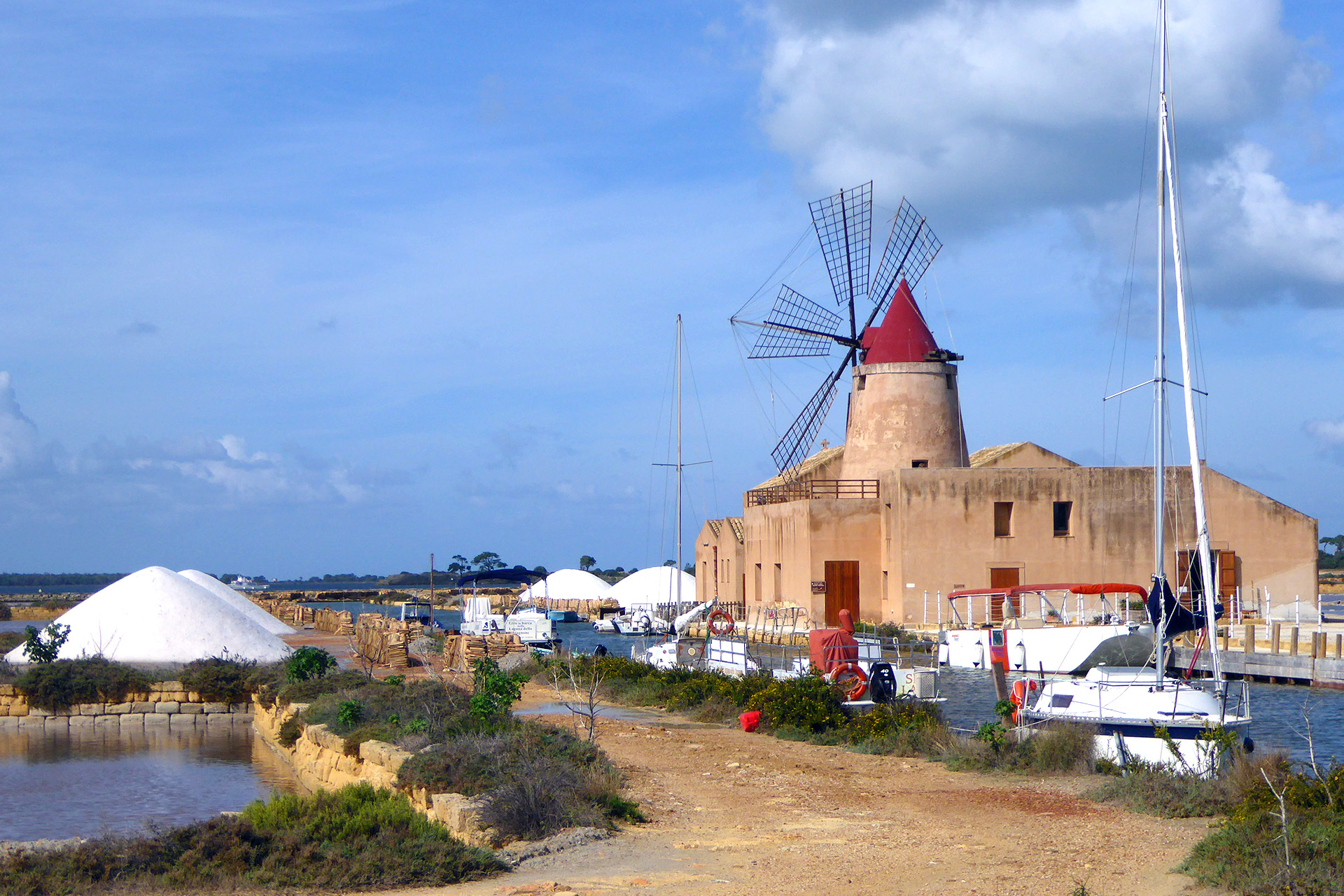
Next day saw us visiting, preceded by an extended ‘hunt the winery’ in the winding, often unmarked streets, of Marsala, the truly garage winery of Foderà, so well-hidden, that none of the numerous people we asked for directions knew there was a winery there. Antonio and his son produce a Grillo, a Merlot and two Syrahs, and late harvest Merlot and Grillo – both delicious, as is their olive oil. All of which they label by hand using an old wooden machine. After a hearty lunch of barbecued sausages and various cakes, we headed up the hill to visit the white cube I could see from my Baglio window. The white cube, unfortunately sticking out a bit from the surrounding hillside, was the new winery of Nino Barraco, who produces a range of natural wines from solely Sicilian varieties, including a Perricone. We were fortunate enough to be there at sunset and Nino’s terrace afforded us an amazing view over the Marsala salt pans, with their windmills and piles of salt, and the Egadi Islands beyond.
As well as visiting the salt pans and the salt museum, the town centre, with its narrow streets, historic buildings and imposing cathedral are worth visiting, as is the nearby hilltop town of Erice and the fishing town of Trapani. Perhaps you might also be lucky enough to make it over to the island of Mozia to visit its Phoenician ruins in one of the flat-bottomed boats which ply the lagoon, or you could even paddle out there. Marsala, like any Sicilian town, also offers ample opportunities for eating and drinking, for example dine at Ristorante Le Lumie, Bottega del Carmine, or eat in or pick up some supplies for a picnic at the wonderful Ciacco Putia Gourmet. You could either stay in an old Baglio up on the hill, such as Baglio Donna Franca or Baglio Oneto, or in town at Hotel Carmine. Of course, being in Marsala, you shouldn’t miss its namesake fortified wine, so in this case, you should pay a visit to Marco De Bartoli.
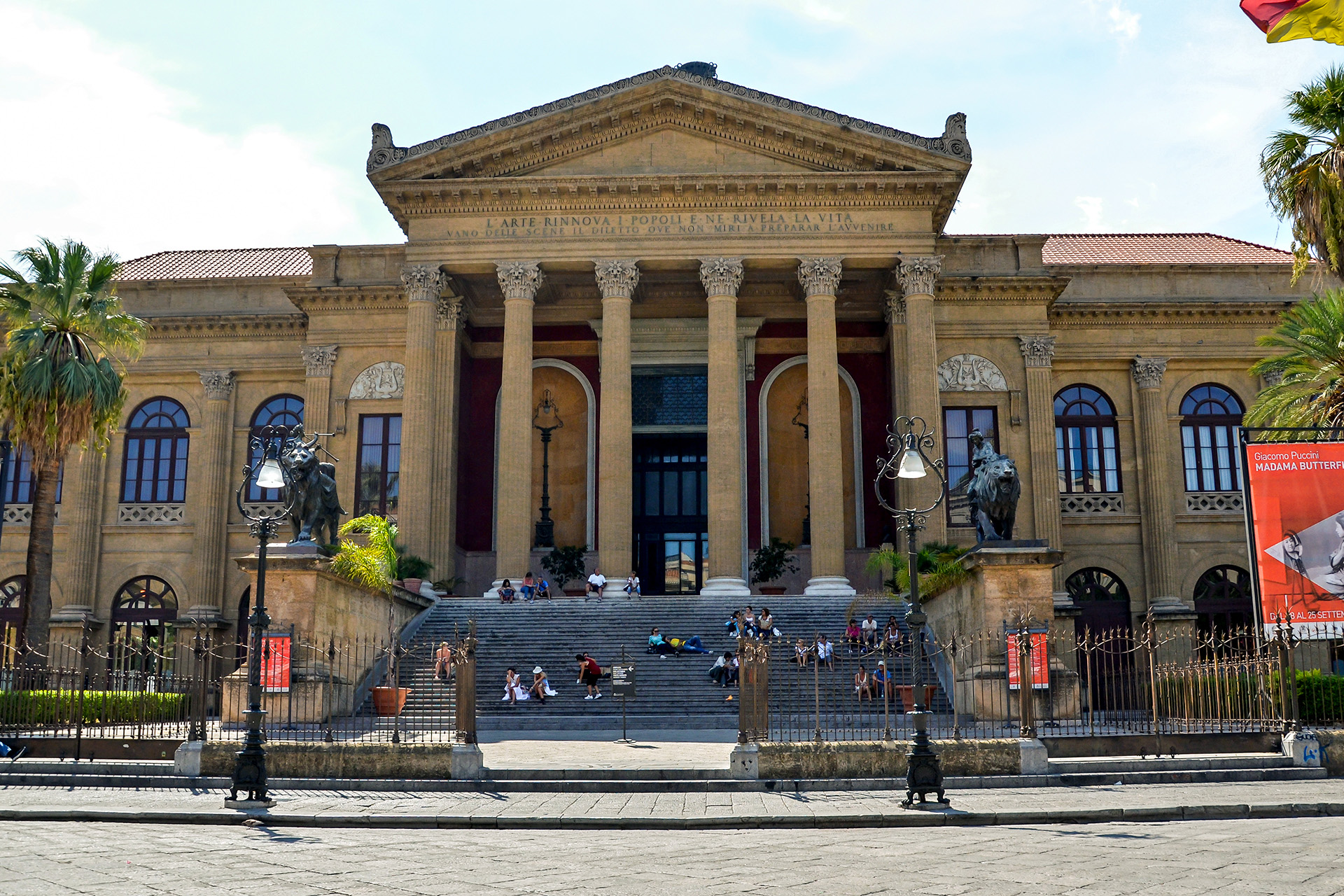
Those craving big city life could make a day trip to Palermo, the capital of Sicily and visit the Norman cathedral, Teatro Massimo (the largest in Italy) and the Vucciria market – Vucciria means ‘confusion’ in Sicilian, so just watch your bag!
Heading over to Etna on the other side of the island, we bumped along on the bus, many at the back cracking their heads on its roof, past the incredibly well-preserved Greek temples of Agrigento, standing proud against the azure sky. We called in for yet more food and wine at Masseria del Fuedo and Principi di Butera in the Caltanisetta region before arriving at the foot of Etna after sunset, ready for a new experience.
The next day dawned clear and bright and we set off on our red-plastic-seated, open-topped tourist bus to discover Etna. Etna is a strange place; bordered on one side by the sea, close to the city of Catania, a startlingly high number of settlements pepper the sides of the glowering volcano, with its plume of white smoke rising into the blue sky. As you climb the winding roads, settlements become sparser and you are greeted by vines, nestled on the black volcanic soils, supported in many places with black-walled terraces. We saw how the lava flows are constantly changing the landscape and the soils. The vines are generally trained in ‘albarello’, that is a vine trained up a single post, the traditional method on Etna. Etna, although a historical vineyard area, was mostly abandoned in the mid-twentieth century as people sought an easier life elsewhere. However, in the eighties, winemakers such as Benanti began to revive the old traditions and there are now more than 100 wineries (and growing) up on the sides of the volcano, although the majority are not locals.
We visited five wineries, each quite different from the other. I Custodi delle Vigne dell’Etna is currently building a new sustainable winery, which will use a natural cooling system, using wind directed down a tower – it’s quite windy up on Etna. The charming Antonio Benanti took us on a short tour of some old Benanti vineyards and then we had a ‘light’ lunch in the magnificent dining room of the winery. At Fischetti, we saw a mixed vineyard of ungrafted vines, whose average age is 82 years. Fabio, the Italian export manager with a Yorkshire accent, escorted us around the vines at Terrazze di Etna and showed us the Cirneco dogs, said to accompany the Egyptians home when eating and drinking – there was also a statue of one towering above the entrance gate. At Nicosia, we took a look around their ‘palmento’ before heading down to their main winery building, where there was a painted scooter down in the cellar, like the painted two-wheeled donkey carts I remember from childhood visits to Sicily – there’s also one at Benanti’s winery.
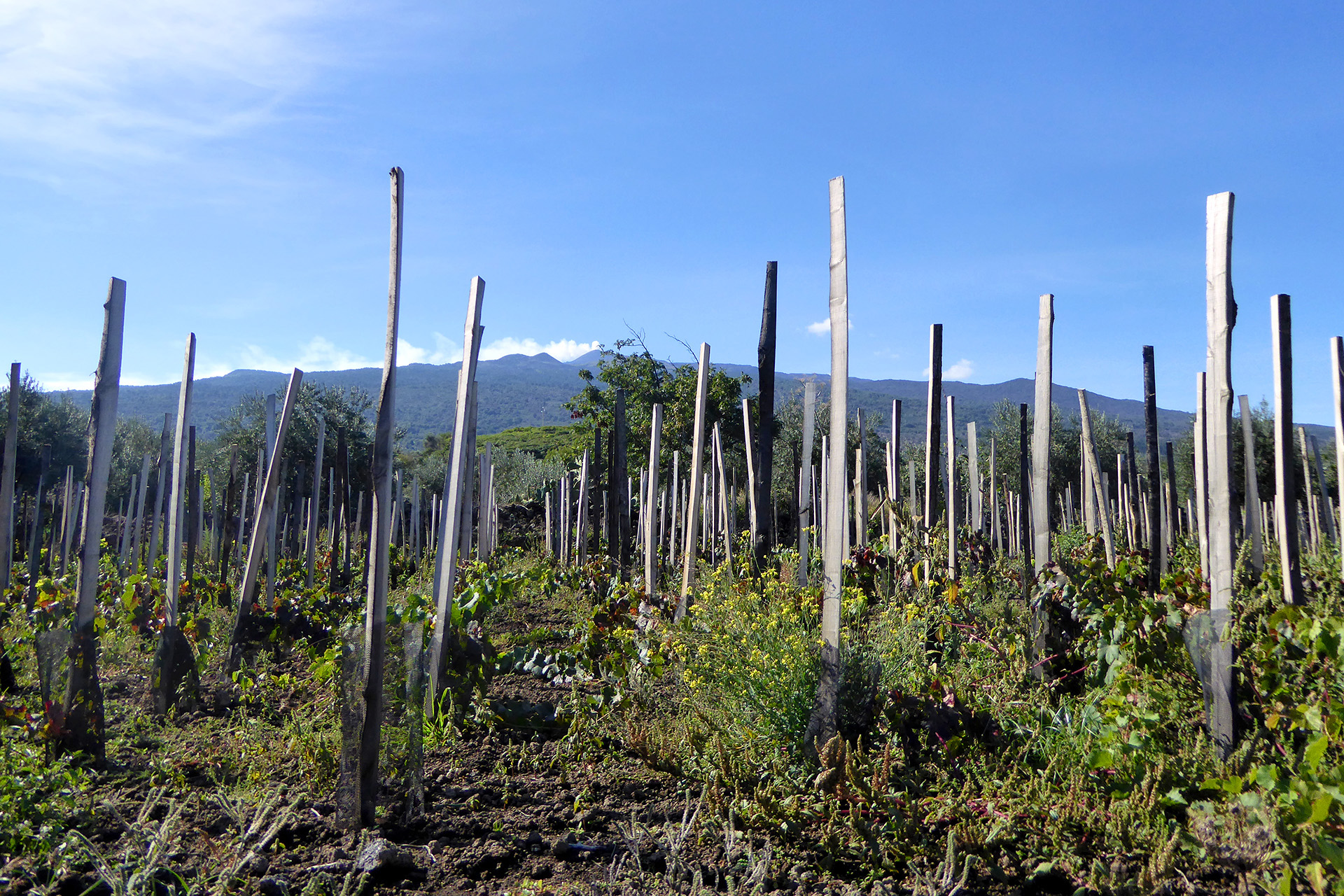
Incidentally, the palmento is the traditional winery of Etna, where the grapes were brought, pressed and processed. In the past, there were hundreds of these, and many of the wineries still retain one for visitors to see. Now, however, you can’t legally make wine in a palmento, unless for your own consumption – although, that would be very expensive. Everyone showed typical Sicilian hospitality, each laying on an excess of delicious food, and hosting the wines from four or five other wineries. Therefore we had plenty of chance to try a huge range of Etna Rosso and Bianco and of course Nerello Mascarese, Nerello Cappuccio, Catarratto and Carricante, the varieties most typically planted on Etna, as well as a wonderful orange ‘amaro’.
You should of course visit Etna itself, pay a visit to Catania and its magnificent, yet sadly rather dilapidated palazzi and marvel at the Roman theatre up on the hill in Taormina. If you have time to head a bit further afield, then take a look at Baroque Noto, Ragusa and the Greek port of Siracusa.
You could stay at the Picciolo Golf Resort in Rovitello or the Tenuta San Michele in Murgo, and perhaps you might end up dining with some winemakers at the inexpensive Bar Osteria Cave Ox in Solicchita with its excellent range of Etna wines and home-cooked food.
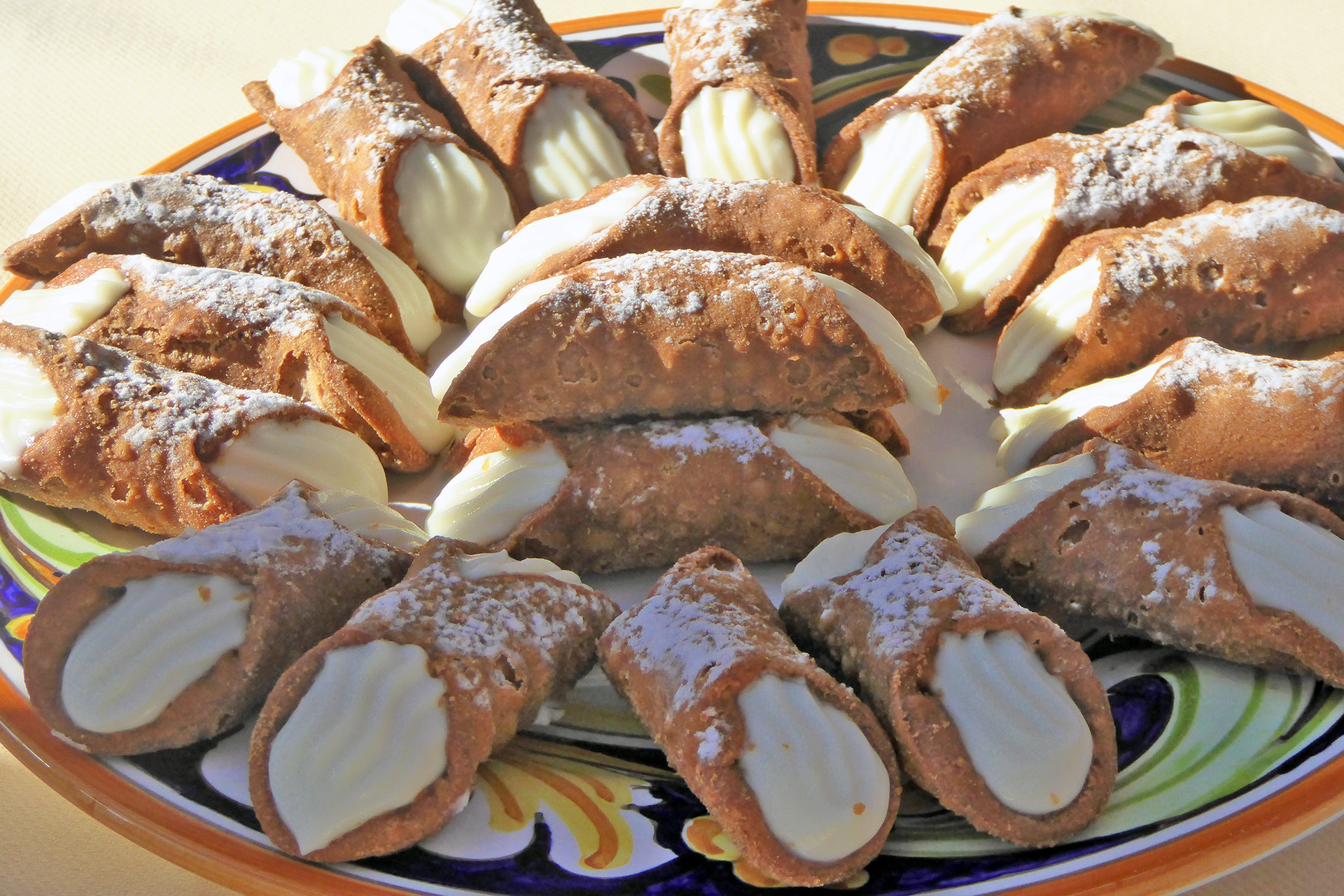
And if you want to learn more about Sicily through literature, I can recommend two books from my university days – Leonardo Sciasca’s ‘Day of the Owl’, regarding the Mafia, or Lampedusa’s ‘The Leopard’, about the declining years of the nobility in Sicily – they say quite a lot about why Sicily is like it is. There are also two great books on Sicilian wine: Palmeto by Robert Camuto and The World of Sicilian Wine by Bill Nesto and Frances Di Savino.
As we barely touched the surface of Italy, I’ll definitely be back.



